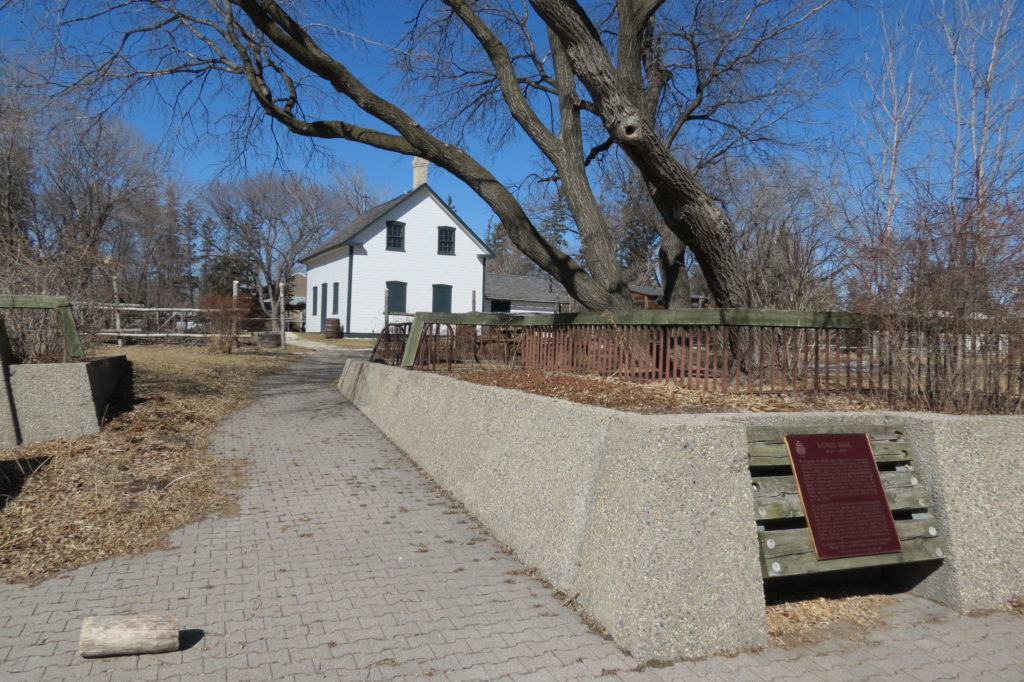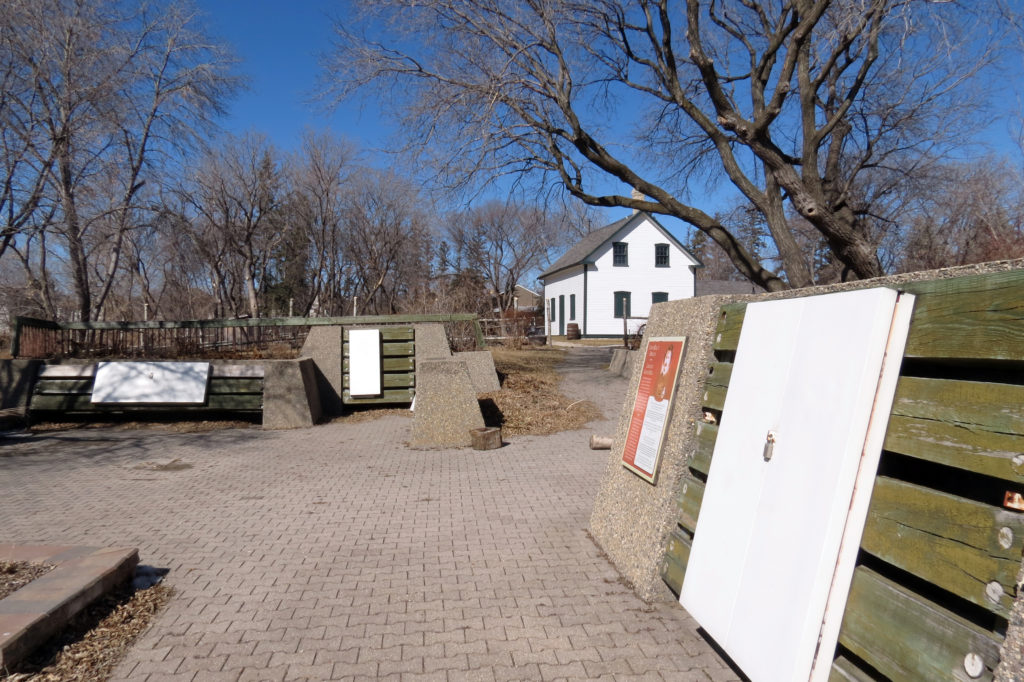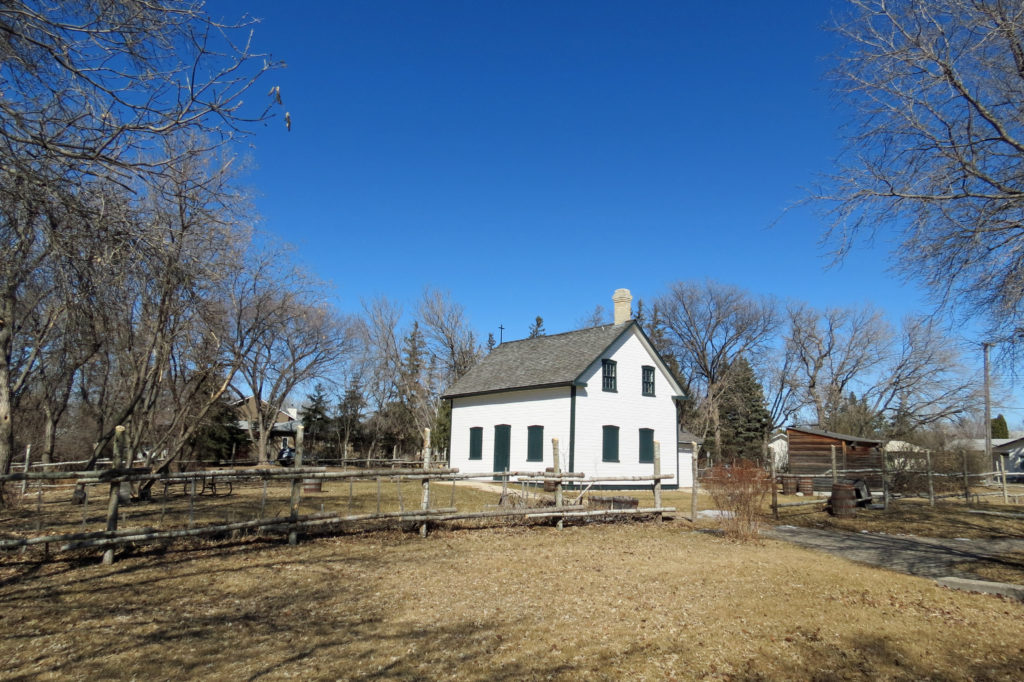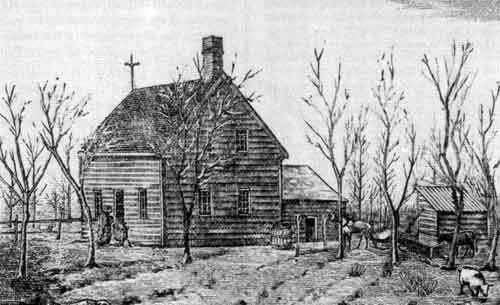
/ Blog
May 12, 2021
Manitoba’s History Lives at Riel House
Most Canadians will know the name Louis Riel.
The founding father of Manitoba and Métis leader, Riel’s story is well-known, especially in Manitoba. Evidence of his legacy is scattered throughout the City of Winnipeg; be it the barrier established by Riel and fellow Métis soldiers to prevent land surveyors from the Canadian government from entering the province, the statutes of him at the Manitoba Legislative Building and in St. Boniface, or his grave site at the St. Boniface Cathedral.
Then there is of course, Riel House at 330 River Road.
Though Riel himself never lived in the home, a number of his relatives would over the years. The Riel family had deep, well-connected roots in the community by the time Louis Riel rose to prominence in 1869. Louis was the son of Louis Riel Sr, who was born in present-day Saskatchewan in 1822. Riel Sr., was trained as a wool carder before taking employment with the Hudson’s Bay Company and eventually arriving in the Red River Settlement in 1842. By the time Riel Sr., moved to the Red River Settlement, he was a widow with a two-year-old daughter, Marguerite Marie Riel. His first wife Marguerite Frappier, had passed away the same year their daughter was born.
In the Red River Settlement Riel Sr., met Julie Lagimodière, the daughter of voyageur Jean-Baptiste Lagimodière and Mary Anne Godboury, two of the earliest European settlers in the west and some of the first to settle in what is now St. Boniface. Julie was a devout Catholic and in fact, early in her life she wished to join the Grey Nuns, with the support of Bishop Provencher. It was her parents who ultimately convinced her to accept Riel Sr.’s proposal and the two were married in 1844.
Riel Sr., was a politically active member of the community and an avid supporter of Métis rights. In 1849 when Pierre Guillaume Sayer was arrested for illegally trading furs, during a time when the community was attempting to break free of the Hudson Bay Company’s fur-trading monopoly, it was Riel Sr., who led the charge of 300 protesters to gather outside the courthouse to demand a fair trial and the right to independent trade.
Riel Sr., and Julie would have twelve children – among them, Louis Riel. Those of the children that survived into adulthood went on to play prominent roles in the community. Sara Riel joined the Catholic Church and taught at the Grey Nuns Boarding School from 1868-1871, before becoming a missionary. A significant amount of her writing remains. Another of their daughters, Octavie, married Louis Lavallee in 1876, and the couple farmed alongside what is now St. Anne’s Road. Lavalle was active in politics in the St. Vital area for many years, and fought in the 1885 North West Resistance.
After Riel Sr’s death in 1864, Louis Riel became head of the family. At the time he was studying to join the priesthood in Canada East in Montreal, though he left school a year after his father’s death. After a broken engagement to Marie-Julie Guernon, Riel traveled briefly to Chicago and St. Paul’s, before returning home to Manitoba in 1868 – though he would not remain in Manitoba long. A year later, under Riel’s leadership, a Provisional Government would be formed and the Red River Resistance began. The events of the Resistance are well-documented and can be read here. Following the Resistance, Riel fled to the United States where he would remain for the following 15 years.
Riel House as we know it today, was built in 1880 by Riel’s brother Joseph, though Riel’s mother Julie and her children had lived on the property since 1864. It was here, at 330 River Road in 1869, that a mob of members of the Wolseley Expedition and Anglo-Saxon settlers, threatened Julie in an attempt to learn the whereabouts of Riel following the Resistance. Following this incident, Julie pulled the three youngest Riel daughters from school. The situation remained volatile for some years, and it is unclear when the children returned to school.
The 1880 home was built to accommodate the entire Riel family, and for a number of years housed up to 12 family members (six children, and six adults). Like many early prairie homes, Riel House is built in the Red River Frame style, in which short logs are squared and placed horizontally between longer upright logs. This type of architecture does not rely on the input of an architect, and these buildings were often designed and constructed by the homes occupants. The main floor had been divided into several rooms, and boasted a number of newer amenities and materials. Clapboard siding initially covered the exterior walls of the home, the roofs were shingled and the windows had glass panes. There was even an iron stove instead of a clay fireplace.
The front door opens directly into the main room of the house, where the family spent much of their time. This main room served as the kitchen, dining room, sitting room, and a sleeping room. Two bedrooms are off to the side of this main room, and the upper floor was also used as a bedroom. Understandably with a home so full of family, storage space was at a premium. There was a singular built-in closet, and trunks stashed away underneath the beds to store belongings, but generally there was little room to hide away tools and examples of everyday living. Near the back of the L-shaped home is a summer kitchen, typical of homes at the time and used to prevent the main house from getting too hot in the summer months. Photographs and religious iconography lined the walls of the home, reflective of the closeness of the Riel family and their devotion to Catholicism.
Over the years, Riel relatives moved in and out of the home and modifications were made as time went on. The disastrous 1950 flood damaged the home’s original foundation, and it was replaced with a sturdier concrete one. By this time, the home was occupied by Joseph Riel’s son Honore and his wife, and Riel’s coffin sat in the closet. Winnipeg Tribune journalist Lillian Gibbons recalled posing for a picture in the coffin while visiting the house in 1937. After Honore’s death, his widow Yvonne Riel was the sole tenant of the Riel House, then known as the Riel Post Office.
By the late 1960’s the Manitoba Historical Society was contemplating buying the home. The surrounding neighbourhood of St. Vital was growing rapidly and new developments threatened the future of the Riel House. The City of St. Vital itself was unwilling to buy the property. In 1968, the Manitoba Historical Society (MHS) obtained Riel House for $15,000 and passed management along to the National Historic Sites Board to oversee home repairs. Although they were in part funded by the MHS, the City of St. Vital, and the St. Boniface Historical Society. In 1976 Riel House was designated a National Historic Site.

The National Historic Site plaque with Riel House in the background.
Source: Sabrina Janke, Heritage Winnipeg
As part of the site assessment, Parks Canada staff led an archeological dig on the grounds of the Riel House. A Tribune interview with the excavation crew revealed some of the racially-influenced misconceptions that ran rampant at the time, even among trained historians and archeologists, and shows the importance of physical evidence.
“We always assumed the Métis people were fairly poor off,” said head archeologist Mike Forsman, “but the plates and other artifacts recovered indicate that this wasn’t necessarily so.”
-Winnipeg Tribune, 1976-08-26, page 3
Among the artifacts discovered during the dig, the 11 archeologists discovered a number of pieces including Copeland ware plates, part of a glass doll, clay pipes, and several bone handled knives.
Physical artifacts, be it the built environment or tools and trinkets found in the earth, are invaluable records of peoples lived experiences across history, and can challenge preconceptions of the way people lived years ago. Critically, they may also provide vital information about people whose lives are not typically written about. Preserving this evidence keeps a record of the past for generations to come, and is a reminder of Manitoba’s vibrant and complicated history.
Thankfully Riel House was able to be restored and repaired, and ultimately reopened as a museum in 1980. Today Riel House is managed by the St. Boniface Historical Society and has been recreated to reflect the spring of 1886 – a distinct period of tragedy for the Riel family. Further west, in present-day Saskatchewan, another attempt at resisting Canadian expansion had taken place in 1885 – yet again led by Riel. This time however, Riel was caught, charged with treason, and executed. Riel’s body was returned to the family home in St. Vital, where it laid in-state for two days before his remains were buried at the St. Boniface Cathedral. Riel’s younger sister Sara had passed away three years earlier, and Riel’s wife Marguerite died just six months after Riel’s execution.
Reverting the home back to its near original condition was a laborious process. Led by Restoration Architect Michel Sourcy and Restoration Technician Henri van der Putten, and members of the Original Restoration Workshop with Parks Canada. It was interestingly, the first Parks Canada restoration process to include houseplants.
Layers of wallpaper were peeled away to find the original mud and straw walls, which were then x-rayed to examine the condition of the logs. The home was then lifted off its concrete base and the restoration crew recreated the original stone and mortar foundation. The window frames and mullions are original, as are the shelves in the cupboards. Putten spent hours scouring antique stores to find suitable replacements for worn out hardware. The restoration workshop at Lower Fort Garry was used to create all the pieces that were needed. A garden sits near the house itself, much like the one the Riel family would have used in the 1880s. A larger field next door would have been used to grow wheat, rye, and oats. There is one new addition: a modern exhibit area that sits directly south of the house, with interpretive panels.

Boarded up interpretive signs at Riel House in the spring of 2021.
Source: Sabrina Janke, Heritage Winnipeg
The Riel House Museum officially opened on June 20th, 1980, with interpreters in period costume providing public programming under the management of the St. Boniface Historical Society. Like many small museums, the bulk of the museums programming took place over the summer months, and this continued for many years. Though in 2012, Riel House experienced a new hiccup. Parks Canada abruptly cancelled its $56,000 contract with the St. Boniface Historical Society and for a time it looked as if Riel House was to be without an interpreter. In 2013, the Louis Riel Institute (an associate of the Manitoba Métis Federation) took over programming for the site.
Riel House remains in St. Vital, surrounded by a radically different neighbourhood than once stood there, but continues to serve as a reminder of the legacy of the family of Manitoba’s founding father.

A Parks Canada sign outside of the Riel House along River Road.
Source: Sabrina Janke, Heritage Winnipeg
HAPPY MANITOBA DAY FROM HERITAGE WINNIPEG!
We are so fortunate to live in a beautiful province with such rich heritage.
Celebrate 151 years of our province with us by downloading our FREE children’s activity booklet!
THANK YOU TO THE SPONSOR OF THIS BLOG POST:

Written by Heritage Winnipeg.
SOURCES:
Riel House, National Historic Sites of Canada
Lillian Gibbons, My Love Affair with Louis Riel
Riel House, Directory of Federal Designations
Riel House On-Line Tour, Parks Canada
Riel House, History, Parks Canada
The Promise of Our Lady of the Good Heart
St. Boniface Historical Society Archives
Winnipeg Free Press Files
Winnipeg Tribune Files














